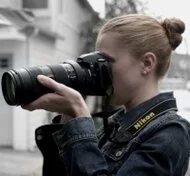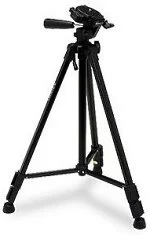 Photography Quick Tips for Ghost Hunting Beginners:
Photography Quick Tips for Ghost Hunting Beginners:
Bring a camera. You may use a digital or film camera with 400 speed film. Do not use night time flash settings which lengthen the exposure time. Pack extra batteries, film or memory cards. Avoid creating camera flashes near reflective objects such as mirrors, chrome or glass. Take several shots from the same location and from different angles to help decipher paranormal manifestations from dust or reflections. This will also provide you with comparison shots. Waiting thirty seconds while stationary before taking pictures may help eliminate some dust particles in the air (or you can add a lens hood to your digital camera to help reduce dust orbs). We recommend using a full spectrum camera with an Infrared light when ghost hunting as the best method. This eliminates the need for use of the flash and prevents recording most false anomalies.
 Lengthen the Exposure Time
Lengthen the Exposure Time
The next tip for ghost hunting photography flies in the face of what many ghost investigators will recommend: use lengthened exposure. Only if you can use a tripod, mount the camera on top and lengthen the exposure time (it may be a night time setting on your digital camera). We have found that the longer the exposure, the more apparition photos appear to be captured. It is not a rule, but we are seeing a trend. It just may be that the longer time the camera shutter is open affords more time for an entity to manifest within the electromagnetic spectrum. Of course, if you can do this using a full spectrum camera, you will increase your chances of photographing a ghost even more. It's good to keep in mind that the slightest movement of the camera from a bump or holding it will produce strange photographic anomalies, such as light bars, orange haze and orb-like light contaminants. So, only use this setting in conjunction with the tripod.
False Positives: Not Ghosts!
Bright light, rain, dust etc., can produce "orbs" (balls of light) that are not genuine. Do not smoke during your investigation (it will look very much like ectoplasm). Hold your breath during cold environments before taking pictures to eliminate mist from your breath appearing in your photos. Be aware of the surroundings. Being alert, one should try and remain objective by seeking to eliminate any natural occurrences that could produce false results. Look for things hanging in front of your camera while photographing such as tree limbs, your camera strap, your hat, spider webs, ropes, hair etc. They will appear "bright white" if the flash reflects off of something at close range.
Cell phones and pagers should be turned off as they can distort detection equipment and compasses as well as digital images and camcorder recordings. If you edit your photograph in a computer photo editing program, you may end up with additional anomalies in your photograph, especially if it becomes saved at a lower quality, enlarged or reduced in size (pixellation may be mistaken for something it is not). Always preserve the original digital file of the ghost photo just as the camera recorded it with the same file name, etc. If you are using film, make sure the effects in your photo are from the ghost and not a development error. Compare the film with the negatives, if necessary. For more about False Anomalies, visit our Fake Ghost Pictures page.
Use Colloborating Indicators to Photograph Ghosts
In conjunction with ghost photography, you can also use compasses (or EMF meters) to help detect changes in energy fields and a thermometer to help detect "cold or hot spots." Changes in energy fields as well as temperature shifts could be pointing to paranormal activity. If one is sensitive to the spirit, these items are not needed; but do provide additional confirming evidence as to the haunting. In either case, taking a series of photographs during heightened paranormal activity is recommended. Always take many photographs of the areas where paranormal activity is detected or sensed.
Also Read...
Ghost Hunting Tips

